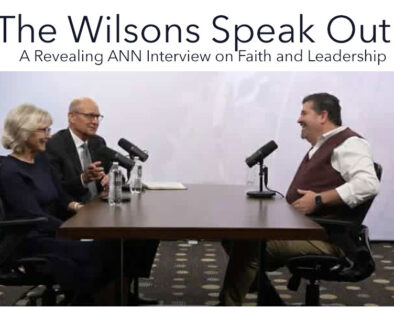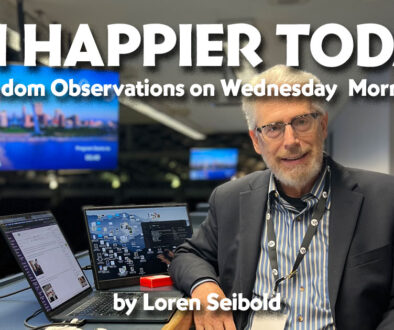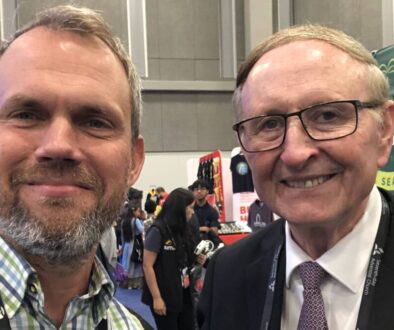Millennials: Ready or Not, Here They Are
by Lawrence Downing
Millennials: Ready or Not, Here They Are!!!
Millennials: Those born between 1982 and 2003
Number of: 95 million plus
Methods: Networking
Effect: Disrupt existing orgs and institutions
The book, Millennial Momentum how a new Generation is Remaking America, by Morley Wineograd and Michael D. Hais (Rutgers University Press, 2011) serves as an informative guide to organizations and individuals that wish to better understand and navigate the ever-changing American cultural landscape. The Seventh-day Adventist church, its members, pastors and administrators might learn from the authors’ research and findings.
In the first chapter, the authors compare two speeches by two United States presidents, Lynden Johnson and Barack Obama. Each was delivered to an audience that gathered in the University of Michigan football stadium. President Johnson gave his speech in May, 1964. President Obama was the graduation speaker 46 years later. Both presidents challenged their hearers to be part of rebuilding a new America and urged them to participate in revitalizing our country. The hearers were implored by each president to restore a sense of community and restore American’s values.
When President Johnson spoke, he addressed the last of the GI Generation, who in 1964 were at the height of their generation’s political influence. These people lived at the end of the Great Depression. They had witnessed the threat of fascism. The president couched his remarks in military language, vocabulary his audience well understood. He asked whether his audience was willing to join him to create the Great Society; to join him in the battle to enable every citizen to escape debilitating poverty; to join the battle to enable all people to experience an enduring peace so that all will experience a richer life of mind and spirit.
The authors observe that President Johnson’s audience did not rise to the challenge. The Baby Boom Generation arrived on campuses the next semester, not to climb on the president’s band wagon, but to join the parade to protest the president’s war in Vietnam and the beliefs of the GI generation. The debate over abortion and other civil rights would divide the nation for the next forty years.
President Obama’s speech, in contrast, was delivered at the beginning of a new era of economic upheaval and political debate. He, as the president elected through the efforts of the Millennials reflected the attitudes and beliefs of this new generation whose numbers were greater even than the Boomers. He assured his hearers that government would help Americans respond to change. He identified what he termed “two strands of DNA.” One segment of society believes in a limited government; another affirms that government, though limited in its power, can help us respond to change. He said there are some things that can be done only when we work together, and government must keep pace with the times.
In addition to calling for togetherness of purpose, the president called for people to engage in discourse that did not question the motivation or patriotism of those on either side of the debate. This, he said, is what makes us Americans. We can, at the end of the day, look past all our differences; all our disagreements and still create a common future.
For his third point, the president called people to engage in public life. He invited them to take up the call of President John Kennedy who announced the creation of the Peace Corps on the very campus where President Obama addressed the students. In this call, President Obama stuck the resonating chord: the members of the graduating class, the millennials, wanted to serve. They wanted to be engaged and they expected to make a difference.
Prior to the president’s speech, Alex Marston, a member of the senior class, addressed his classmates. He pointed out that while they want change, they are afraid of it. He noted that he and his classmates grow uneasy as the world around changes. This statement provides opportunity for the book’s authors to ask a defining question: “was the country ready to embrace the changes the president advocated or would it continue to adhere to the beliefs and practices of its past?” This is the point where the challenge of the millennials intersects with the life and practices of the Seventh-day Adventist church, or any other organization. How will we respond when millennials interact with Adventism?
Wineograd and Hais, in their study of the millennials, inform us that this, the largest of any other previous American generation, will influence every aspect of society: how we learn, vote, entertain ourselves and how we worship. Millennials value community. As a diverse group, they are unified in beliefs that will change America and all its institutions. They are oriented toward one another, as evidenced by YouTube, Facebook, Twitter, Yammer, Linkedln, and numerous other social networks.
In the workplace, millennials open up corporate life. They consult with their friends from other companies. They are not driven by individual values, although they have values. They are highly pragmatic. They solve personal and societal problems by working at the local level. Their methods are to bring change from the bottom up. They do not respect a top down management style. The millennials will manifest the same disruption in American society that we saw in the Arab spring and in the music industry. They will shake up every institution that thinks things can be controlled or directed from those at the top. It is not that they reject government. No, they look to government and other institutions to provide guidance and assist to implement policy.
Wineograd and Hais are emphatic: Millennials cannot be ignored! If America is to have a clear sense of where it is headed in the future it is essential to have a clear understanding of the behaviors and attitudes that drives this generation. Is it any less important for the Adventist church and its leaders on every level to be less concerned? Less aware? And if we continue on our present course what then?
If Wineograd and Hais are correct in their conclusions, the Adventist church is in for a major institutional shock as millennials mature and make their presence known in the local parish. We have not prepared our congregations to incorporate the thinking that millennials hold. Our hierarchical management style is incompatible with how millennials think and function. How our local congregations (remember — millennials work from the bottom up!) respond to the opportunities that the millennials provide may well determine whether we thrive as a Christian organization or whether we become the equivalent of the Shakers or Christian Scientists, as one more obsolete or irrelevant organization on the religious bone pile.



